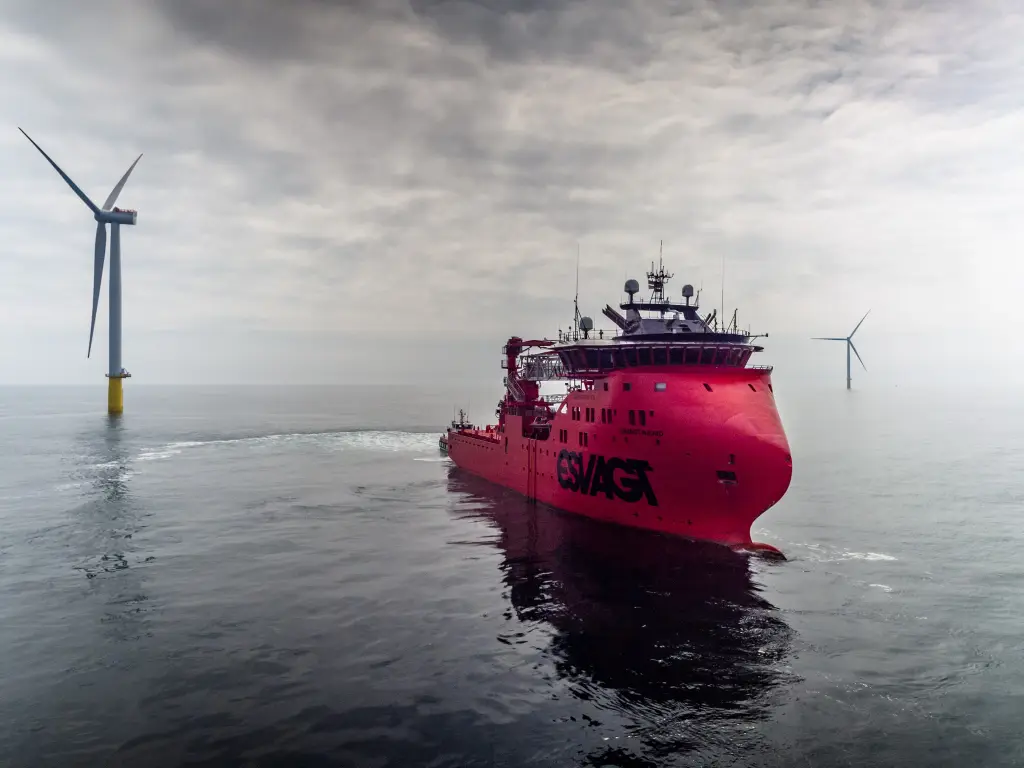Chris Fox, Head of Policy UK renewables, Equinor
13/06/2025 | Offshore wind


The steps needed to achieve the UK’s offshore wind mission: Reset, Scale, Deliver.
2025 marks 25 years of offshore wind in the UK. Since the first turbine was installed in Blyth in 2000, the UK has become a global offshore wind leader with around 15GW of installed capacity. The UK’s ambitious target of achieving Clean Power by 2030 (CP2030) and 43-50GW of offshore wind signals to investors that the UK is open for business when it comes to clean energy. The target doesn’t just stand as a galvanising call to action, but as a huge economic opportunity to deliver investment and jobs to parts of the country that need it most.
However, this needs to be delivered against a difficult global backdrop. It has been a tough few years for the offshore wind sector. Global macroeconomic headwinds in the form of inflation, high interest rates and supply chain pressures have led to failed auctions in multiple markets, including Contracts for Difference (CfD) Allocation Round 5 (AR5) in the UK, and projects have been delayed or cancelled as a result. In response, developers and investors have been raising hurdle rates, concentrating on fewer core markets, and seeking to prioritise ‘value over volume’.
Despite the UK Government reacting quickly in AR6 to adjust auction parameters to economic realities, wider factors outside of their control (such as tariffs) continue to pose a risk. We’re not out of the woods yet.
Along with others, Equinor has been impacted by these challenges and has adjusted its short-term renewable ambitions in response. Notwithstanding this, Equinor is maintaining its long-term commitment to net zero by 2050 and reconfirming its view on the important role offshore wind will play in the energy transition.
The UK has been one of the most attractive markets globally to develop offshore wind and remains a core market for Equinor. Today our UK wind farms power 750,000 homes and by 2030, as part of our own journey towards net zero, we aim to power 7 million British homes, taking us from megawatts to gigawatts.
The UK is where we built the world's first floating wind farm, Hywind Scotland, and where we are now building the world's largest offshore wind farm, Dogger Bank, with our partners SSE and Vårgrønn. When fully operational, over 400 people will operate and maintain the wind farm – part of a wider 2,000+ jobs created or sustained through the project.
Alongside our partners, we are also planning to extend our operational Sheringham Shoal and Dudgeon projects off the Norfolk coast and develop a fourth phase of Dogger Bank. During the construction phase, these extension projects are anticipated to support more than 1,800 full time jobs per year across the UK and within East Anglia, generating more than £370 million in direct gross value added (GVA) to the economy.
However, having ambition alone is not sufficient and without further urgent action this economic opportunity presented by CP2030 is at risk.
AR7 later this year is the last best chance to secure ‘shovel-ready’ projects that can deliver for 2030. However, with network charging, connections reform, auction rules and wider market design all in flux there is an unprecedented amount of uncertainty going into this year’s auction. Several key decisions from Government over the next 100 days may well determine whether the CP2030 target remains achievable, or, more importantly, whether the potential economic benefits for the UK can be realised.
That is why Equinor is pleased to be an event partner at this year’s Global Offshore Wind (GOW) Conference (17– 18 June), as we believe the focus on the theme of ‘Mission: Possible’ couldn’t come at a more critical time. It offers an opportunity for industry, supply chain and policy makers to come together and align on the action needed.
From Equinor’s perspective the action needed now can be summarised in three steps: reset, scale and deliver.
Global Offshore Wind
Reset
Making the right call on key decisions over the next 100 days will be key to resetting investor confidence sufficiently ahead of AR7 for the auction to be successful.
A prompt decision needs to be made on Review of Electricity Market Arrangements (REMA) and this needs to provide as much clarity and certainty as possible (e.g. on legacy arrangements) to investors well ahead of AR7. Whatever your view of the proposals to move to zonal pricing, it’s clear that, were the uncertainty to be prolonged or the can to be kicked down the road, this would lead to additional risk premia being priced into CfD bids that could otherwise be avoided by a clear decision either way.
Whether to extend the CfD contract term beyond 15 years as another big open question. With projects now having economic lifetimes of around 35 years, the current CfD contract covers less than 50% of the asset life. Our analysis has shown that extending the CfD to at least 20 years can reduce merchant tail risk and the cost of capital, bringing down CfD break-even prices by up to 10%.
The decision on CfD eligibility also looms large. Recent events show that delivery risk persists even once a project has secured its CfD. It’s our view that this risk is even higher the less mature a project is, which could undermine supply chain investments, and if the non-delivery framework is not strengthened this could encourage speculative bidding. Ultimately, if unconsented projects are to be eligible for the CfD then they should be bound to the same rules as consented projects to maintain a level playing field in the auction.
Scale
AR7 will undoubtedly need to deliver a record level of new offshore wind volume to keep the 2030 targets within reach. However, when it comes to securing pre-2030 inward investment into supply chain capacity, post-2030 pipeline visibility and certainty will be equally key.
As we argued at last year’s GOW, it takes more than one offshore wind project to make a factory, and it will take more than one successful auction to provide the supply chain with the line of sight to future orders to overcome fears of overcapacity in the long-term and have the confidence to invest in the short term. This is particularly important for floating offshore wind, where investment in enabling port infrastructure will be key to enabling local assembly.
We believe the Government should introduce an annual minimum capacity ambition based on long-term volume targets derived from the Strategic Spatial Energy Plan. This, in combination with a forward-looking schedule of seabed lease and CfD auctions, tailored to both fixed and floating wind, would, in our view, go a long way to enabling the supply chain and ports to scale up. A similar call was made at April’s WindEurope conference in Copenhagen, where industry called for 100GW of auctions over 10 years across the EU.
Deliver
In order to ensure awarded offshore wind capacity can be delivered and existing capacity retained, there needs to be a relentless focus within Government on ensuring policies are conducive to this.
Grid supply chains, particularly for HVDC, are under huge strain with transmission companies and developers, who are all competing for the same scarce supply chain capacity and manufacturing slots around the world. Government should consider establishing an equivalent of the Electricity Transmission Advanced Procurement Mechanism, a scheme put in place by Ofgem for Onshore Transmission Owners, to help developers manage large pre-commitments in the grid supply chain.
Many of the UK’s first offshore wind farms which make up the 15GW of current installed capacity will, by the early 2030s, be approaching the end of their original operational life. Action on policies to support lifetime extension and/or repowering is therefore needed to prevent the loss of renewable capacity.
Other live topics within the industry, such as wake effects, would also benefit from being viewed through the lens of whether they help this existing capacity to be retained.
The industry’s understanding of far-field wake effects has grown significantly in the last few years, and while there are differing views on how to respond, in our view it has become clear that buffers used in previous leasing rounds are not sufficient to mitigate the significant commercial impacts from wake effects. Whether existing projects are compensated or not for generation loses due to unforeseen wake effects from new lease areas will have a material effect on end-of-life decisions. Identifying, mitigating and potentially compensating impacts on other seabed users is already a key part of the planning framework and our view is that this issue should be no different. Key upcoming decisions in the planning process this year will likely set a precedent on this issue for years to come.
Mission: Possible
We believe that the mission is not clean power in and of itself. It’s what clean power represents, not just in terms of gigawatts installed, but in terms of energy security, growth, jobs and the revitalisation of the communities in which we work.
Delivering these tangible benefits is what will help bring the public (and voters) with us on the journey to net zero, and it’s a mission we firmly believe is possible with the right action.
Header image: Dudgeon Offshore Wind Farm © Equinor



